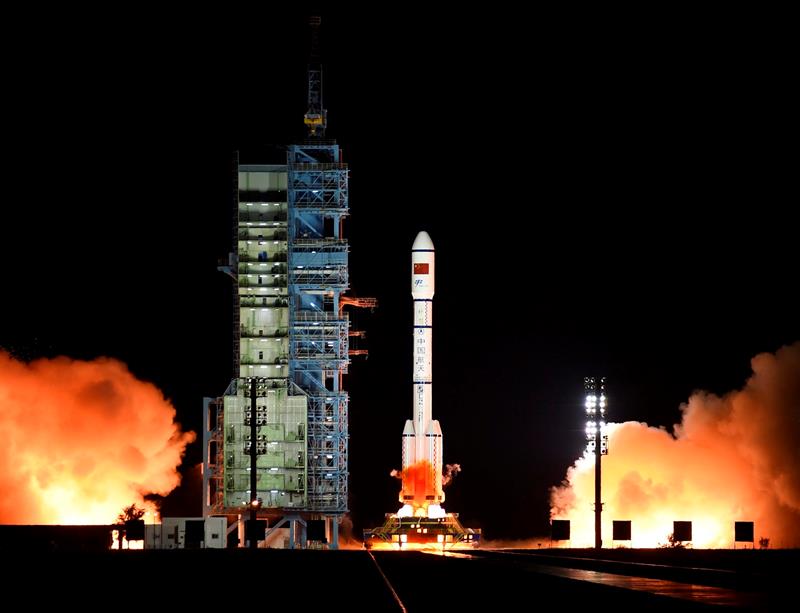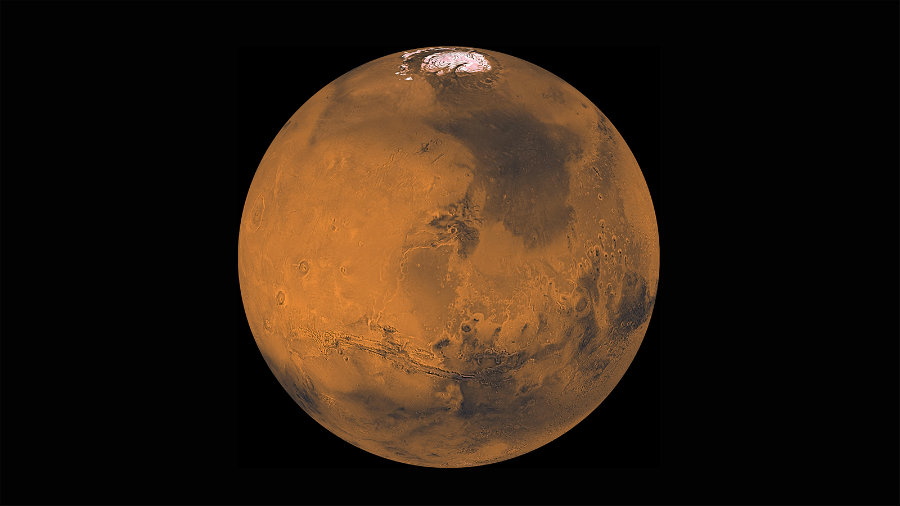China launched the spacecraft Tiangong-2 into orbit on Thursday, marking a step toward having its own space station by early 2020s.
Tiangong-2 will then propel itself 244 miles into space to await the arrival of two Chinese astronauts in late October, who will be performing experiments for 30 days before returning to Earth. The first spacecraft of this kind, the Tiangong-1, was launched in 2011 and will join the Tiangong-2 to provide fuel and supplies. The Tiangong-1 is expected to return to Earth in late 2017 as the Tiangong-2 fully outperforms its predecessor, which has already achieved its tasks.

China to become a player in space exploration
Aboard the Tiangong-2 there’s the world’s first cold atomic clock to operate in space. Atomic clocks measure the vibrations of atoms to define seconds. Cold atomic clocks use lasers to slow down the atoms and allow for a higher level of precision, as the clock can miss a certain number of atom rotations. The main application of the atomic clock is to calibrate global positioning systems (GPS).
The cold atomic clock developed by China is relatively small compared to the one located in America’s National Institute of Standards and Technology in Boulder, Colorado, which is 2.5 meters high. China’s cold atomic clock will stay accurate for at least one billion years, while the U.S.’s most advanced atomic clock will cease being accurate in 300 million years.
Because the atoms analyzed by the atomic clock will not be subjected to gravity, measures will be even more accurate while also providing information on variations of microgravity. The Tiangong-2 will also study gamma-rays, quantum key generation, and heat generation in space.
Along the Tiangong-2, there will be a micro-satellite that will protect the spacecraft from collisions with space debris, which some may argue will cause a greater deal of space pollution. Thousands of satellites over the following years to provide Internet access and communication services are expected to increase the risk of space debris and communication traffic disturbances.
The Tiangong-2 is the predecessor of a permanent space station, which would make China a pioneer in the space race rather than just a participant. Currently, China is not entitled to send astronauts to the International Space Station.
Aiming for the Red Planet and beyond
Chinese astronomers plan to study Mars and deploy their own remote-controlled probe to survey the Martian landscape. Mars exploration for China is set to start somewhere around 2020, basically just around the corner for space exploration timelines.
Chinese President Xi Jinping has announced that one of China’s goals is to become an aerospace power by setting unprecedented goals in space exploration.

“Such a big plan to achieve orbiting, landing and rover deploying in one mission will make a legend. Only by completing this Mars probe mission can China say it has embarked on the exploration of deep space in the true sense,” stated Zhang Rongqiao, leader of the first Mars exploration mission to be performed by China.
Although there is a rather obvious nationalist sentiment in being able to freely explore space, China will be a contender as it will be able to perform important advances in the fields of technology, medicine, and engineering just by being able to coherently perform experiments in zero gravity. Having their own space station will allow Chinese scientists to have a rallying point to launch more ambitious missions to outer space.
Back in August, China had already revealed the concept images of its Mars rover, as they were looking for names and logos for the device. The mission will have two stages. The first will have a probe orbit Mars and the second will stage a landing to collect samples of the Red Planet’s surface. The whole project is set to be completed before 2030.
“China’s Mars exploration mission has also drawn attention from the international community. This competitive public campaign to name and logo the Voyager can be seen as side-step in the cultural domain,” stated Liu Jizhong, director of China’s lunar exploration program.
The astronauts set to reach Tiangong-2 will have the task of researching docking procedures and life-support, as these tools are necessary to accommodate people on a space station for an extended period.
Tiangong-2 weighs around 10-tons. Tiangong-3, otherwise known as Tiangong Space Station, will be joining the convoy after 2020. It is expected to be as large as the Russian Space Station Mir.
Mir orbited Earth from 1986 to 2001. It was heavier and larger than any other spacecraft of its time. It harbored scientists for over 3,000 days and saw the collapse of the Soviet Union while it was stationed in space. Funding ceased and Mir deorbited slowly until it reentered the atmosphere and burned over the South Pacific Ocean.
As time passes, more countries and entrepreneurs become interested in space exploration as it represents an unexploited field, where communications and scientific development are just waiting to be capitalized for launching the human race to new frontiers.
Source: Xinhua
